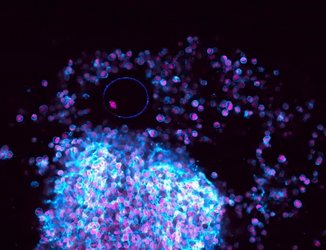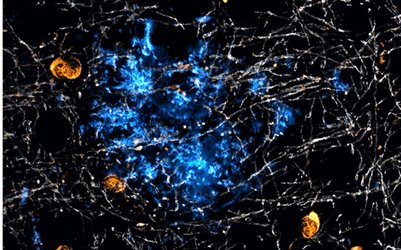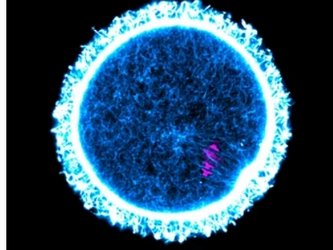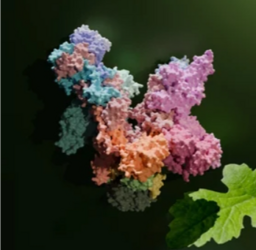Max Planck Institute for Multidisciplinary Sciences
Campus Member
Unraveling the Mysteries of Life Itself
How do nerve cells communicate with one another? How can complex organisms develop from a single cell? What regulates our "internal clocks"? Scientists at our institute are concerned with the molecular processes that drive and regulate the complex processes of life itself. These processes are not easily observed, however. They play out in the cellular nanocosmos and are invisible to the naked eye. Common microscopes allow us to track bacteria and observe individual cells, however they reveal very little about what happens deep in the interior of living cells.
A Sharpened Insight into the Cellular Nanocosmos
A focal point of our research is to develop techniques that permit us to see into the molecular world. Ultra-high-resolution fluorescence microscopy, magnetic resonance spectroscopy, electron cryo-microscopy, and atomistic computer simulation are some of the methods that our scientists have successfully used to put proteins – the tiny nanomachines of living cells – under the magnifying glass. Their objective is to shed light on the mechanisms with which proteins fulfill their varied functions in the cell, for example as molecular motors, chemical factories, photo cells, and sensors. Even cellular logistics are managed by proteins. Currently the question of how substances are transported between the cell's various compartments is being studied at our institute in more depth.
How is the Blueprint of Life Implemented?
In addition, our scientists are investigating how the blueprints for proteins are made readable as well as examining the mechanics of ribosomes, so-called "protein factories". Proteins can only fulfill their tasks in the cell when built correctly. How quality control functions in their construction is thus a key topic of research at our institute.
From Solar Energy to Movement - Molecular Dynamics
Many phenomena in the inanimate natural world can also be attributed to molecular processes. Many molecules, radicals and atoms in the atmosphere react with one another after having been generated and animated by solar radiation. The study of internal molecular dynamics is another imporant field of research here.
Diversity - the Key to New Ideas
In order to gain insights into such complex life processes, scientists from a diverse range of disciplines and 50 different countries work together at our institute. Many different languages can be heard daily around the campus, as well as healthy debates about projects, ideas, and results. Intensive collaboration between biologists, chemists, physicians, and physicists is a way of life here, and also extends far beyond our institute's walls to include a multitude of scientists, scholars, and specialists worldwide.
Research Networks
- Bernstein Focus Neurotechnology (BFNT) Göttingen
- Bernstein Center for Computational Neuroscience (BCCN) Göttingen
- Center for Systems Neuroscience (CSN)
- Courant Research Centre "Nano-Spectroscopy and X-ray Imaging
- European Neuroscience Institute Göttingen (ENI-G)
- German Centre for Cardiovascular Research (DZHK), Göttingen
- Göttingen Proteomics Forum (GPF)
- Nanoscale Microscopy and Molecular Physiology of the Brain (CNMPB)
Graduate Study Programs
Joint Professorships
- Prof. Markus Zweckstetter - with UMG & DZNE
- Prof. Henning Urlaub - with UMG
- Prof. Reinhard Jahn - with UMG
- Prof. Stefan Luther - with UMG
- Prof. Marina Bennati - with Georg-August-Universität Göttingen
- Prof. Alec M. Wodtke - with Georg-August-Universität Göttingen
Collaborative Research Center
- CRC 1633: Pushing Electrons with Protons – Unifying Multi-Electron Redox Catalysis by Proton-Coupled Electron Transfer
Participating institutions: UG - CRC 1565: Molecular mechanisms and interplay of gene expression processes
Participating institutions: UMG, UG - CRC 1456: Mathematics of Experiment: The challenge of indirect measurements in the natural sciences
Participating institutions: UG, UMG, MPS - CRC 1286: Quantitative Synaptology
Participating institutions: UMG, UG, MPI-DS, DZNE - CRC 1190: Compartmental Gates and Contact Sites in Cells
Participating institutions: UG, UMG - CRC 1073: Atomic scale control of energy conversion
Participating institutions: UG
Key research areas
- Physics, biophysics, physical chemistry, chemistry
- Structural biology
- Molecular biology, biochemistry
- Neurobiology
- Developmental biology
- Molecular Biology of Neuronal Signals
- Neurogenetics
Work Life Resources
- Child care facility (1-4 years, run by Kinderhaus Göttingen e.V.)
- Art expositions (“Kunst am Fassberg”)
- Language courses
- Sport activities
Research Infrastructure
- Facility for Innovative Light Microscopy (FILM)
- Bioreactor facility
- Career service for junior researchers
- Crystallization facility
- Office for research support
- Otto Hahn Library
- EU Liason Office
- Proteomics facility
- Facility for Field Emission Scanning Electron Microscopy
- Synthetic chemistry facility
- Transgenic cell culture facility
- Transmission electron microscopy facility
- Live-Cell Imaging
- Karl Thomas Library
- Animal House










